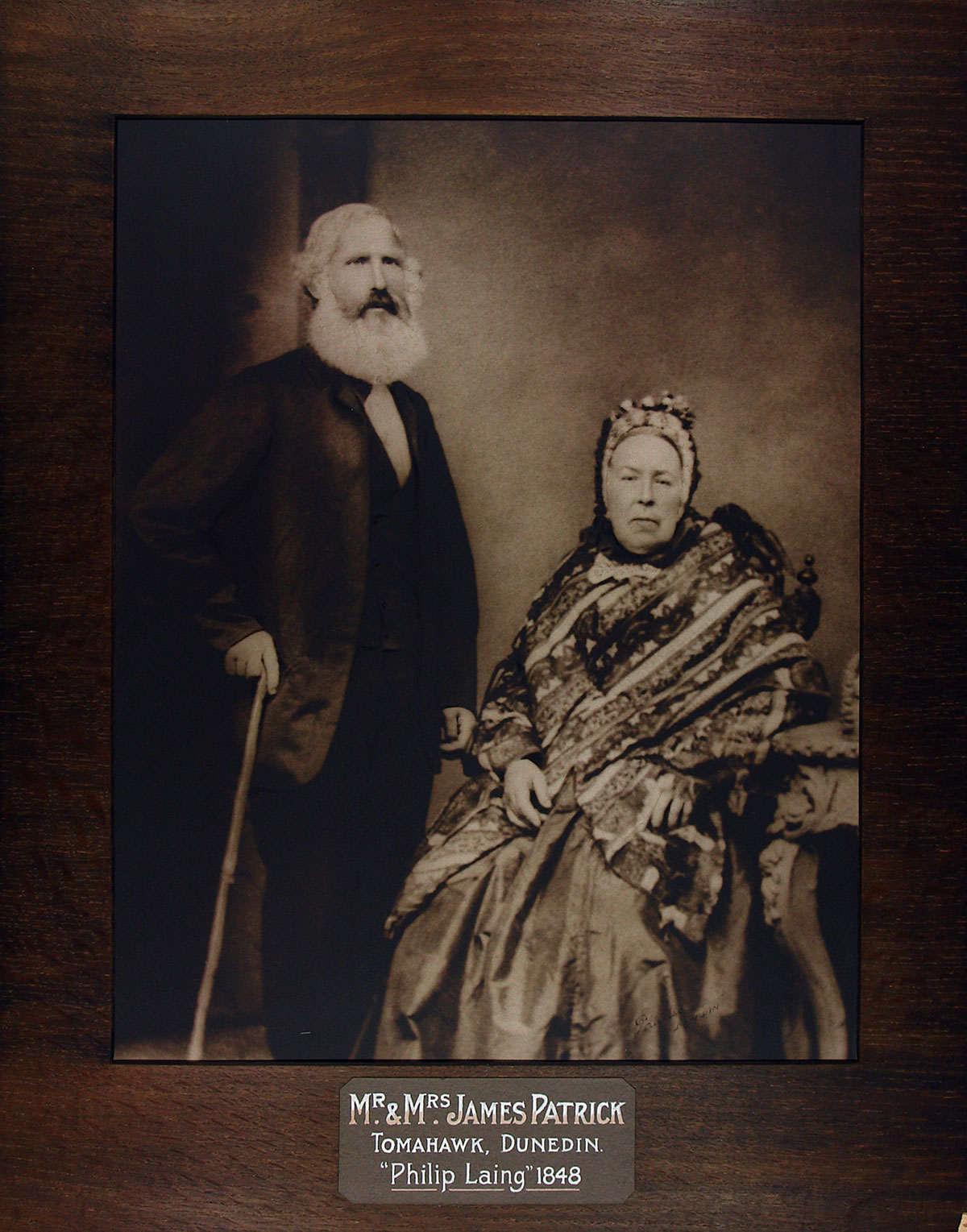James Patrick was born on 15 December 1811 at Hamilton, a town in the central lowlands of Scotland. He received a basic parish-school education before entering the weaving trade as an apprentice, working in a shawl factory in Lanarkshire. His future wife, Isabella Hunter, was born into a farming family at the nearby town of Rutherglen in 1812. They married in Glasgow in 1838 and went on to have three children: James, Margaret, and Marion.
James remained in the weaving trade for ten years but, becoming tired of its monotonous routines, he craved adventure and new pastures. The Otago Association scheme of settlement in New Zealand offered the perfect opportunity for a new life, and James embraced his chance wholeheartedly. With three young children, the family emigrated to New Zealand on the Philip Laing and arrived in Port Chalmers in April 1848.
The Patricks first built a home in an area of Dunedin called ‘Little Paisley’ (now the site of the Southern Cemetery) because of all the ex-weavers from Paisley who congregated there. Another son and daughter were born to the Patricks in Dunedin. There was no work available in Dunedin for weavers, so James tried his hand at a new trade. He learnt how to mix clay and sand to bake bricks, found he had an aptitude for it, and went on to craft bricks for Captain Cargill’s chimney.
In 1857 James purchased 50 acres of land at Tomahawk, Anderson’s Bay, and the family relocated there. James was the first settler to build a home in the bush beyond the lagoons and faced all the trials of pioneering in a new and undeveloped landscape. Neither James nor Isabella took any notable role in public affairs but through patience and hard work the family earned an unblemished reputation as highly respected and unassuming settlers. Isabella died at home in 1886, aged 74, and James followed 11 years later, on 7 July 1897, aged 85.

Mr and Mrs James Patrick (née Isabella Hunter)